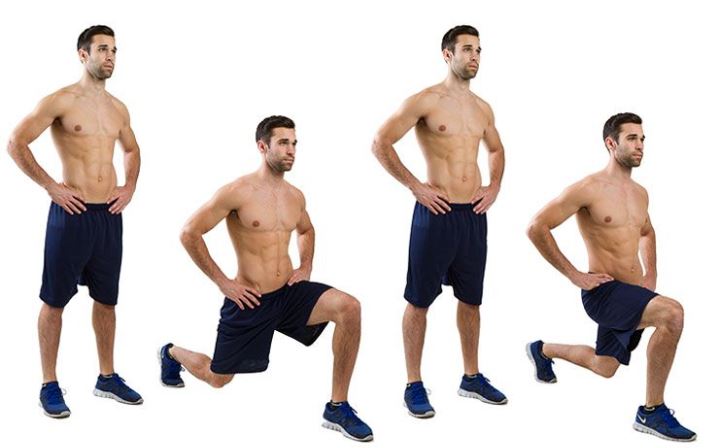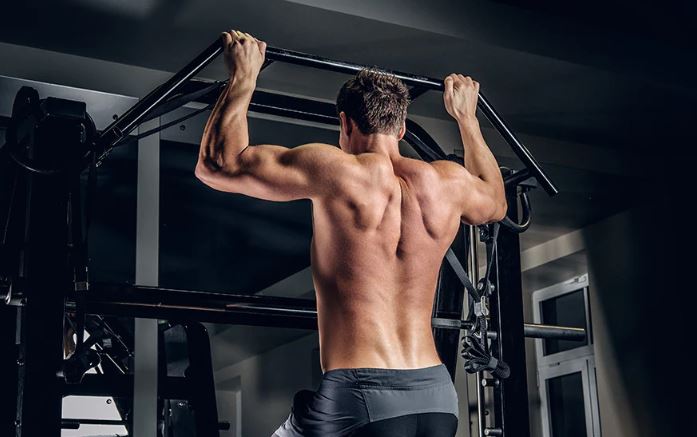Outline
- Introduction
- Brief explanation of the importance of full-body exercises.
- Overview of what the article will cover.
- Squats: The Foundation
- Benefits of squats for full-body workouts.
- Proper squat form.
- Variations of squats.
- Deadlifts: Power and Strength
- Exploring the benefits of deadlifts.
- Correct deadlift form.
- Different types of deadlifts.
- Push-Ups: Upper Body and Core
- Advantages of push-ups for full-body engagement.
- Proper push-up technique.
- Variations to target different muscle groups.
- Pull-Ups: Back and Arm Strength
- Importance of pull-ups in a full-body routine.
- How to execute a pull-up correctly.
- Modifications for different fitness levels.
- Planks: Core Stability
- The significance of planks for overall core strength.
- Correct plank posture.
- Advanced plank variations.
- Lunges: Leg Strength and Balance
- Benefits of lunges for lower body development.
- Proper lunge form.
- Variations to target different muscles.
- Burpees: Cardio and Strength Combined
- Why burpees are effective for full-body conditioning.
- Step-by-step guide to performing a burpee.
- Modifications for beginners.
- Mountain Climbers: Cardio and Core
- How mountain climbers benefit the entire body.
- Correct mountain climber technique.
- Intensity variations for different fitness levels.
- Russian Twists: Core and Obliques
- The importance of Russian twists for core stability.
- Proper technique for Russian twists.
- Progressions to increase difficulty.
- Dumbbell Rows: Upper Body Strength
- Incorporating dumbbell rows for back and arm development.
- Proper execution of dumbbell rows.
- Adjustments for beginners and advanced lifters.
- Box Jumps: Plyometric Power
- Exploring the benefits of box jumps for explosive strength.
- How to perform a box jump safely.
- Modifications for varying skill levels.
- Bicycle Crunches: Core and Cardio
- The effectiveness of bicycle crunches for core activation.
- Correct bicycle crunch form.
- Intensity adjustments for different fitness levels.
- Kettlebell Swings: Full-Body Power
- Utilizing kettlebell swings for dynamic strength.
- Proper kettlebell swing technique.
- Precautions to prevent injury.
- Conclusion
- Recap of the top 10 full-body exercises.
- Encouragement to incorporate them into a regular workout routine.
- Emphasis on consistency and proper form.Top 10 Exercises for Full Body
Introduction
Full-body exercises are essential for achieving overall fitness and strength. Whether you’re a beginner or a seasoned gym-goer, incorporating exercises that engage multiple muscle groups simultaneously can help you maximize your workout efficiency and achieve better results. In this article, we’ll explore the top 10 exercises for a full-body workout, covering everything from squats to kettlebell swings.

Squats: The Foundation
Squats are often referred to as the king of exercises for a good reason. They engage the muscles in your legs, core, and lower back, making them a fundamental movement for any full-body routine. To perform a squat correctly, stand with your feet shoulder-width apart, lower your body by bending your knees and pushing your hips back, then return to the starting position. Variations such as goblet squats, sumo squats, and jump squats can add variety and intensity to your workout.
Deadlifts: Power and Strength
Deadlifts are excellent for building strength and power in your posterior chain, including your hamstrings, glutes, and lower back. To perform a deadlift, stand with your feet hip-width apart, grip the barbell with your hands shoulder-width apart, and lift the weight by extending your hips and knees while keeping your back straight. Variations like Romanian deadlifts and sumo deadlifts target specific muscle groups and can be adjusted based on your fitness level.
Push-Ups: Upper Body and Core
Push-ups are a classic bodyweight exercise that targets your chest, shoulders, triceps, and core muscles. Start in a plank position with your hands shoulder-width apart, lower your body until your chest nearly touches the ground, then push back up to the starting position. Variations like incline push-ups, decline push-ups, and diamond push-ups allow you to adjust the difficulty and target different muscle groups.
Pull-Ups: Back and Arm Strength
Pull-ups are an excellent compound exercise for developing upper body strength, particularly in your back, arms, and shoulders. Grab a pull-up bar with an overhand grip, hang with your arms fully extended, then pull yourself up until your chin passes the bar. If you’re unable to do a full pull-up, try assisted pull-ups using resistance bands or a pull-up machine to gradually build strength.
Planks: Core Stability
Planks are effective for building core strength and stability, which is essential for overall functional fitness. Start in a push-up position with your elbows directly beneath your shoulders, engage your core, and hold the position for as long as possible while maintaining a straight line from head to heels. Advanced variations like side planks and plank rotations can further challenge your core muscles.
Lunges: Leg Strength and Balance
Lunges are unilateral exercises that target your quadriceps, hamstrings, glutes, and calves while also improving balance and coordination. To perform a lunge, step forward with one foot and lower your body until both knees are bent at a 90-degree angle, then push back up to the starting position and repeat on the other side. Variations like reverse lunges, walking lunges, and lateral lunges provide additional benefits and variety to your workout.
Burpees: Cardio and Strength Combined
Burpees are a full-body exercise that combines strength training with cardiovascular conditioning, making them incredibly efficient for burning calories and improving overall fitness. Begin in a standing position, squat down and place your hands on the floor, kick your feet back into a plank position, perform a push-up, then jump your feet back to the squat position and explode upwards into a jump. Modify the movement as needed to suit your fitness level.
Mountain Climbers: Cardio and Core
Mountain climbers are a dynamic exercise that targets your core, shoulders, chest, and legs while also elevating your heart rate for a cardiovascular challenge. Start in a plank position with your hands directly beneath your shoulders, drive one knee towards your chest, then quickly switch legs in a running motion while maintaining a strong plank position. Increase the speed for a more intense cardio workout.
